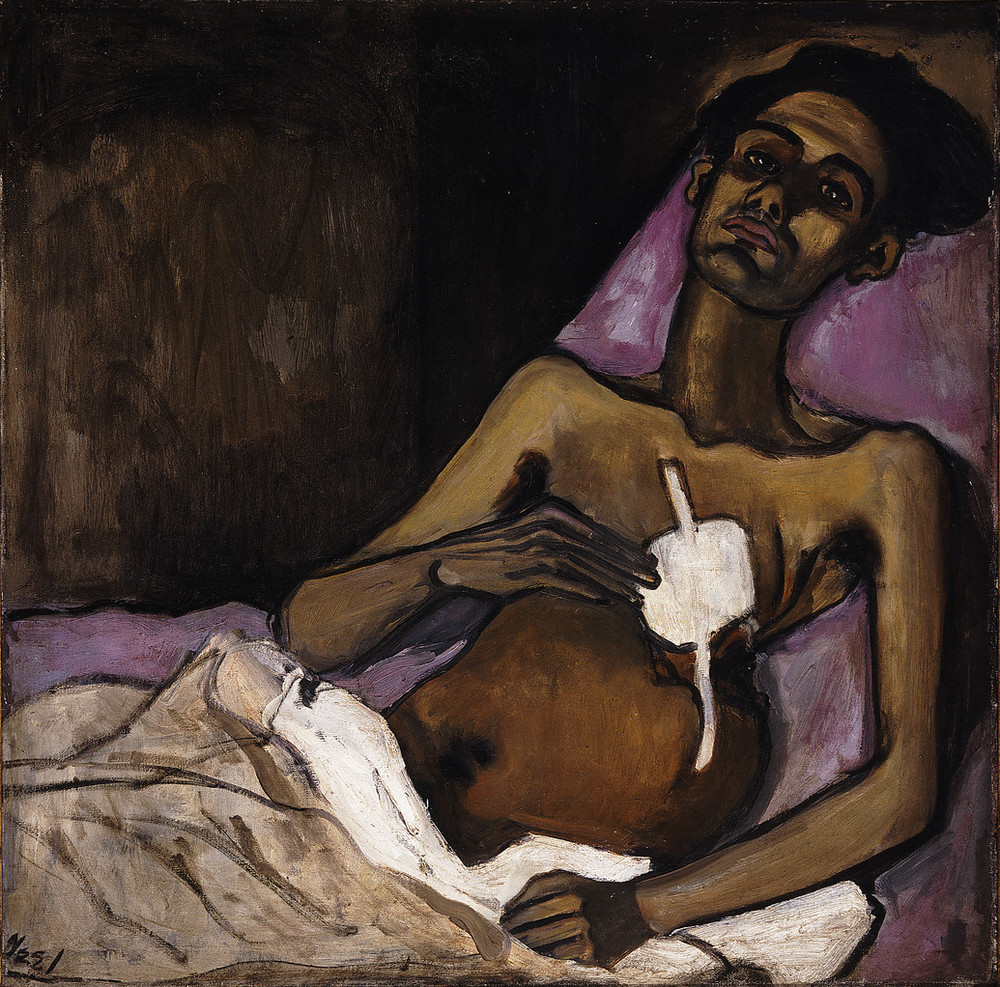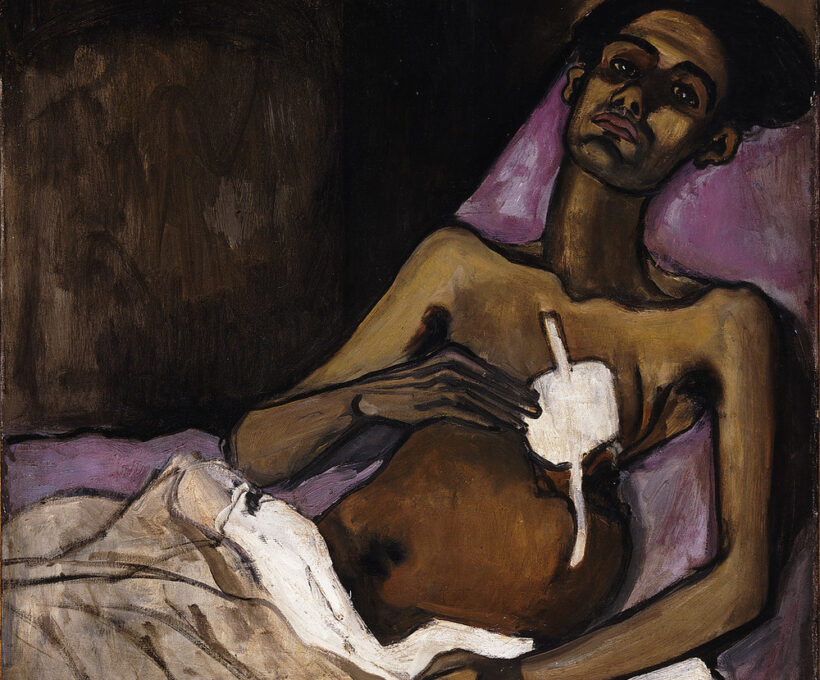Alice Neel
Oil on canvas, 30 inches x 30 inches
1940
According to the Art:
Alice Neel’s painting portrays the illness experience of tuberculous (TB) in 1940, and also conveys social determinants (poverty, malnutrition) that puts populations at risk for illnesses such as TB.
Synopsis:
We are looking at a young man who has tuberculosis (TB) and who is at home recovering from a surgical procedure designed to collapse a part of his lung that is infected. He looks sick. His presentation conveys how TB can be called “consumption.” From this picture, however, we can tell that it is not just the subject’s body that is being consumed, but also his spirit and any reservoir of hope.
The painting appeared on the cover of the June 8, 2005 issue of the Journal of the American Medical Association (JAMA). In his accompanying essay, William Barclay, a pulmonary specialist, surmises that “thoracoplasty” was the surgical procedure used for this person. The procedure involves the removal of several ribs so that the soft tissue the ribs held up collapses upon the lung and closes it off. Barclay calls thoracoplasty “the most radical form of collapse treatment” at the time. He also notes how Neel captured the anatomical consequences of the procedure:
His body forms a graceful sigmoid curve, for a thoracoplasty always resulted in a thoracic scoliosis from the pull of the muscles on the side not operated on, with a compensatory cervical scoliosis in the opposite direction.
A white wound dressing on the left side of the subject’s chest draws our attention because of its brightness and because the subject’s right hand is pointing to it. It’s not covering the surgical incision because that’s on his back. Barclay suggests that the dressing is covering a wound that opened up a track from the skin to the chest lining or to the lung (i.e., a fistula). The dressing takes the shape of a cross, which made the writer of the text accompanying the painting at the museum where it hangs wonder if we are to see the subject as a martyr in the form of Christ.
Analysis:
Alice Neel lived from 1900-1984. Most of her adult life was spent in New York City. She came of age at the time the “New York School” was on the rise. The New York School featured “abstract expressionism,” which reduced figurative aspects of paintings to barely-if-at-all discernable. Neel stuck with portraiture. However, as Eric Kandel explains in his book, Reductionism in Art and Brain Science, she took from abstract expressionism, “its gestural vitality, its vehemence, and its reductionism.” (p. 163)
Though there are abstract qualities to this painting, the subject is not abstract. The subject is Carlos Negrón. At the time of this painting in 1940, he was twenty-four-years old and the brother of one of Neel’s former lovers. She used this approach to her painting to depict life in Spanish Harlem during the 1930s and 1940s. Close living quarters and poverty then predisposed the people there to TB among other communicable diseases. The painting speaks not just to the impact of the disease on individuals, but to the underlying conditions that predispose communities to it as well. As such, it portrays a conception of illness Arthur Kleinman advanced in his book, The Illness Narratives, which allows that illness scenarios can reflect social problems for certain populations as much as health problems of individual people. He points to TB as such an example in the way it can be an indicator of poverty and malnutrition amongst certain groups. Thus, here is where social and artistic conceptions of illness reflect one another.
Also:
Further discussion on the cultural perspective about TB as conveyed by Alice Neel’s painting, T.B. Harlem and as it contrasts with the cultural perspective conveyed by the Portrait of Catherine Rebecca Grey, Lady Manners, is available in this episode of the podcast The Clinic & The Person.
The painting is in the possession of the National Museum of Women in Arts, Washington, D.C., as a gift of Wallace and Wilhelmina Holladay.
© The Estate of Alice Neel, Courtesy David Zwirner, New York
A version of this post is at the NYU Literature, Arts and Medicine Database.




